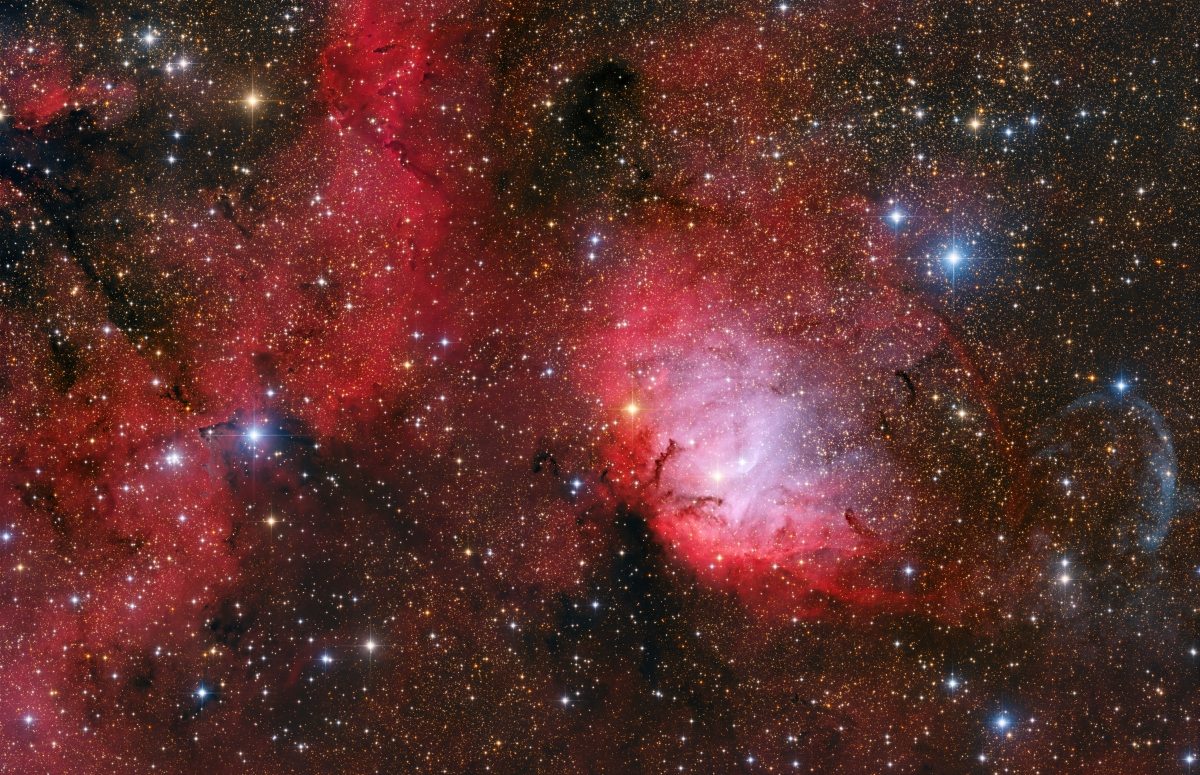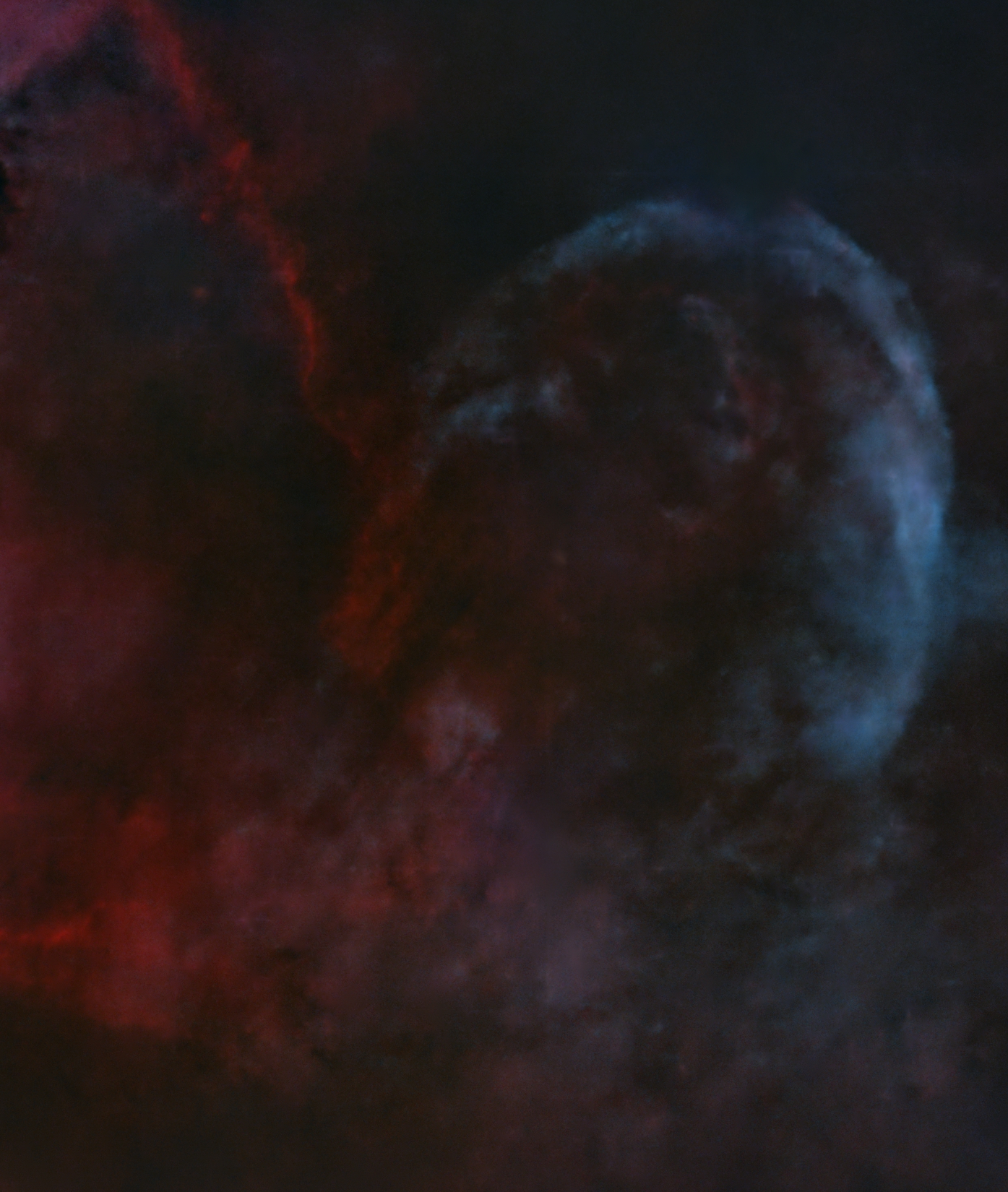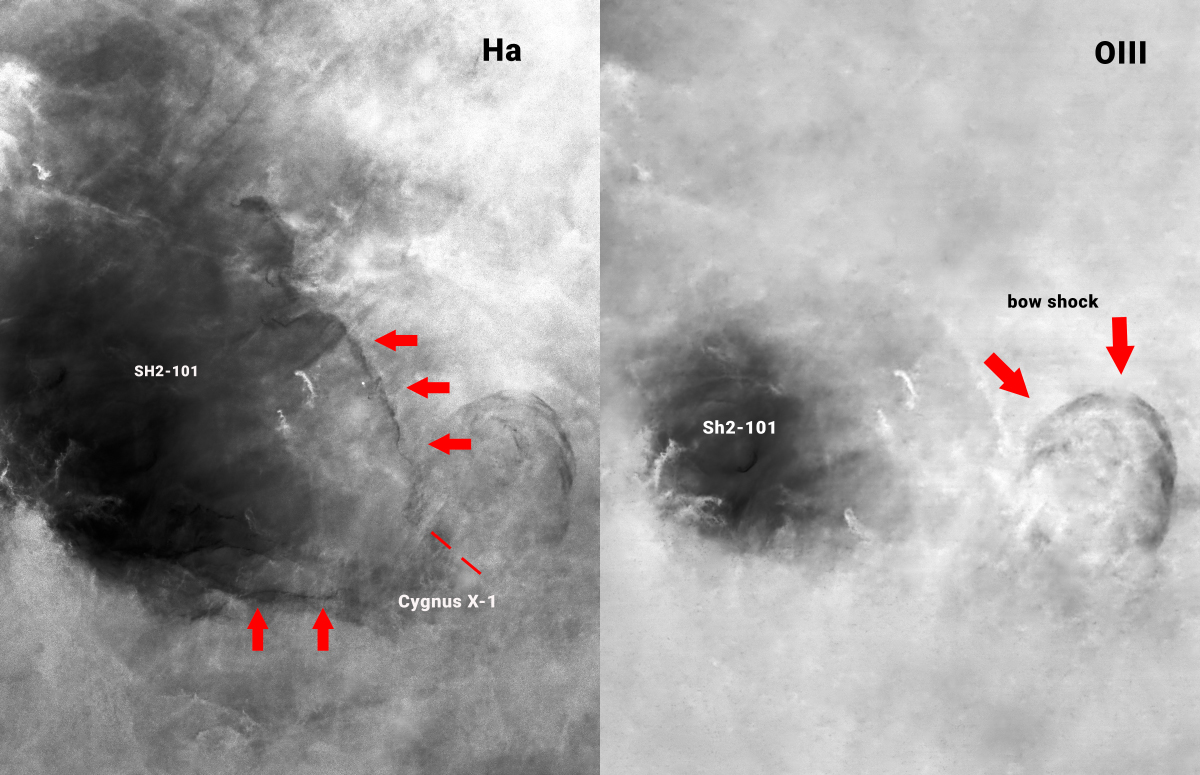
[back] Sh2-101 (Tulip Nebula) with Cyg-X1 Bow in Cygnus
Uncroped 100% version / Unbeschnittene 100%-Version (5978 x 3859 Pixel)

|
(c) 2024 All astro photo images are copyrighted. They may not be used or reproduced without explicit written permission from the authors. |
|
300" |
|
About this Image / Über dieses Bild
| CCD: | Omegon veTEC410c |
| Image Type, Orientation: | RGB-HaOIII Composite, North is at 12:00h |
| Exposure time: | RGB: 39x300s, HaOIII: 170x300s (17:25 total) |
| Exposure date: |
July 28th,29th,31st, August 12th,13th 2024 |
| Location: | Capella Observatory at Skinakas, Crete/Greece,robotic (with babysitting from Bad Arolsen/Germany) |
| Filter: | RGB: Internal Bayer-Matrix, HA/OIII: STC Astro Duo-Narrowband Filter |
| Instrument: | Ganymed 60cm-Hypergraph in primary focus (f=1840 mm) |
|
Final Image Seeing (FWHM): |
1.3" |
| Photographer: | Josef Pöpsel, Frank Sackenheim, Stefan Binnewies |
|
Remarks: |
The emission
nebula Sh2-101 in the constellation Cygnus is also known as Tulip Nebula. It
is a classic emission nebula - a star-forming region. The nebula is
stimulated by the star HD 221718, which can be seen quite centrally. The
star is surrounded by a bluish nebula that gives the impression of a shock
wave. |
|
Bemerkungen: |
Der Emissionsnebel Sh2-101 im
Sternbild Schwan ist auch als Tulpennebel bekannt. Es handelt sich hierbei
um einen klassischen Emissionsnebel - eine Sternentstehungsregion. Angeregt
wird der Nebel vom Stern HD 221718, der recht zentral erkennbar ist. Der
Stern ist von einem bläulichen Nebel umgeben, der den Eindruck einer
Schockwelle vermittelt. |
Starless version of the Cyg-X1 Bow area / Sternlose Version des Cyg-X1 Bogens

|
(c) 2024 All astro photo images are copyrighted. They may not be used or reproduced without explicit written permission from the authors. |
|
Contrast enhanced Inverted Ha- and OIII Exposure of the
Cyg-XI bow area /
Kontrastverstärkte Ha- und OIII-Aufnahme des Cyg-X1 Bogen-Gebietes

|
(c) 2024 All astro photo images are copyrighted. They may not be used or reproduced without explicit written permission from the authors. |
|
Back to the Diffuse Nebulae Overview / Zurück zur Diffuse-Nebel-Übersichtsseite